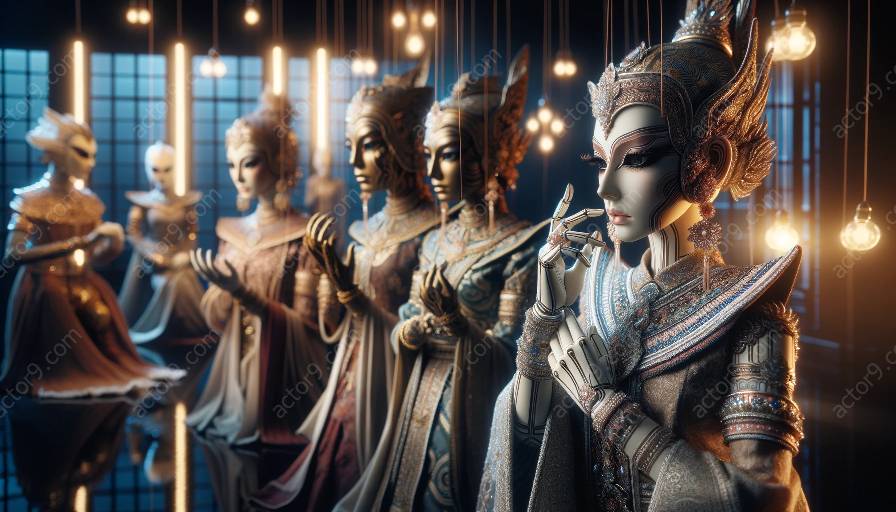Puppetry design is a captivating art form that immerses audiences in a world of imaginative storytelling and visual spectacle. This comprehensive guide explores the intricate art of engaging audiences through puppetry design and delves into the interconnected nature of costumes and makeup in puppetry.
Deep Dive into Puppetry Design
At the heart of puppetry design lies the creation of characters that come to life through the skillful manipulation of puppets. This involves the integration of various design elements, from the construction of the puppet itself to the intricacies of its movements and expressions.
Puppetry design encompasses a wide range of techniques, including the use of different puppet types such as hand puppets, rod puppets, and marionettes. Each type presents its own unique challenges and creative opportunities, allowing designers to explore diverse methods of engaging audiences through the art of puppetry.
An essential aspect of puppetry design is the effective utilization of visual storytelling elements. Designers must carefully consider the aesthetics, colors, and textures of puppets to convey characters' personalities and emotions, ensuring a compelling and immersive experience for the audience.
The Interaction of Costumes and Makeup
Creativity knows no bounds in the world of puppetry, as costumes and makeup play a crucial role in enhancing the overall visual impact of puppet characters. The integration of costumes and makeup in puppetry extends the art form beyond the realm of puppet manipulation, adding depth and authenticity to the characters' personas.
Costumes are meticulously designed to complement the physical attributes of puppets, amplifying their visual appeal and defining their roles within the narrative. From elaborate ensembles to subtle details, puppetry costumes are crafted with precision and artistry to captivate audiences and enrich the storytelling experience.
Furthermore, makeup in puppetry serves as a transformative tool, enabling puppet characters to express a wide range of emotions and convey intricate nuances. The strategic application of makeup enhances the distinct features of puppet faces, imbuing them with depth, expression, and individuality.
Mastering the Art of Engaging Audiences
Engaging audiences through puppetry design requires a masterful blend of creativity, technical proficiency, and storytelling prowess. Designers must possess a profound understanding of audience psychology, leveraging their expertise to craft compelling narratives and mesmerizing visual experiences.
From the mesmerizing movements of marionettes to the enchanting expressions of hand puppets, engaging audiences through puppetry design demands meticulous attention to detail and a keen insight into the dynamics of live performance. Masters of this art form harness the power of design, costumes, and makeup to transport audiences to realms of wonder and delight.
The art of puppetry design continues to evolve, embracing innovative technologies and pushing the boundaries of creativity. As audiences seek dynamic and immersive entertainment experiences, puppetry design stands as a timeless and enchanting form of artistic expression, captivating hearts and minds with its magical allure.


























